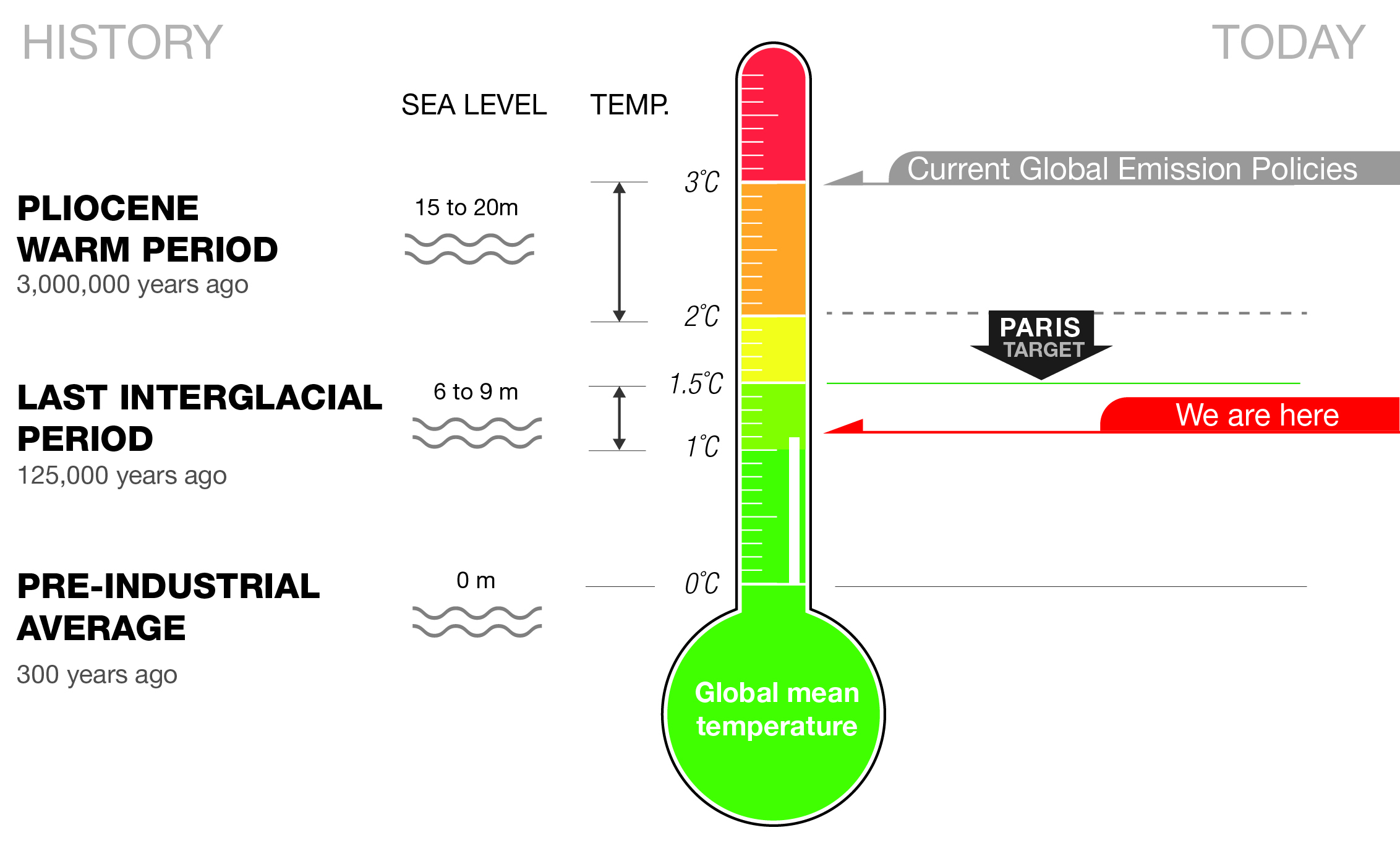Rising Seas
The Paris Agreement presents an ambitious goal: to keep global warming less than 2°C (3.5°F) above pre-industrial levels. But these targets present a massive challenge, because global average temperature is already 1°C (1.8°F) above pre-industrial levels and rising.
Climate change and warming temperatures are causing sea level to rise. This is caused by thermal expansion of the ocean, by melting glaciers, and by melting of the Greenland and Antarctic Ice Sheets.
We know average sea level will rise at least 30 cm (12 inches) over the next several decades, potentially displacing many millions of people living in low-lying coastal areas and causing mass migration and other social issues. However, this rise is not uniform across the planet. Local and regional sea-level change depend on where ice and water are distributed around the Earth’s surface, and how this changes as the polar ice melts and is added to the ocean.
If we fail to restrict carbon dioxide emissions in the coming decades, we will reach a critical temperature threshold, a tipping point, across which the Antarctic ice shelves will collapse. This will cause irreversible retreat of the WAIS and other marine portions of the Antarctic Ice Sheet, with commitment to multi-metre sea level rise over the coming centuries. Dr Molly Patterson, Co-Chief Scientist

If the West Antarctic Ice Sheet were to melt, global average sea level would increase by more than 3 m (9.3 feet). In New York, it would rise by more than 4.5 m (14.8 feet). In Auckland, New Zealand, sea level would rise by 3.5–4 m (11–13 feet), while the southern tip of South America would experience less than 1 m (3.3 feet) of sea-level rise. This pattern of sea-level rise changes again when the Greenland Ice Sheet melts.
We need to understand the environmental conditions that will cause the West Antarctic Ice Shelf to collapse, when it will happen, and just how fast it can retreat.
In West Antarctica, warm ocean currents erode and thin the bottom of large floating ice shelves. This causes an acceleration in the loss of the highly vulnerable West Antarctic Ice Sheet, which largely sits below sea level. However, the vast East Antarctic Ice Sheet may gain mass, as warmer temperatures cause increased snowfall. This results in a greater range of future possibilities, from ice sheet growth that decreases sea level by 7.8 cm (3 inches) to ice sheet melt that increases sea level by 30 cm (12 inches) by 2100.
Ice loss from the Antarctic Ice Sheet is more difficult to predict than ice loss from the Arctic. In Antarctica, 99% of all ice loss occurs when ice slides into the ocean. Unlike in Greenland, there is practically no ice melt on the surface because it is too cold.
Furthermore, the historical record derived from satellites is relevantly short (about four decades) in comparison to processes that could play out over the coming centuries. This makes it harder to project long-term trends. Antarctica is also shielded from the rest of the world by the strongest ocean current and some of the strongest atmospheric currents on the planet, which makes modelling even more complicated.

